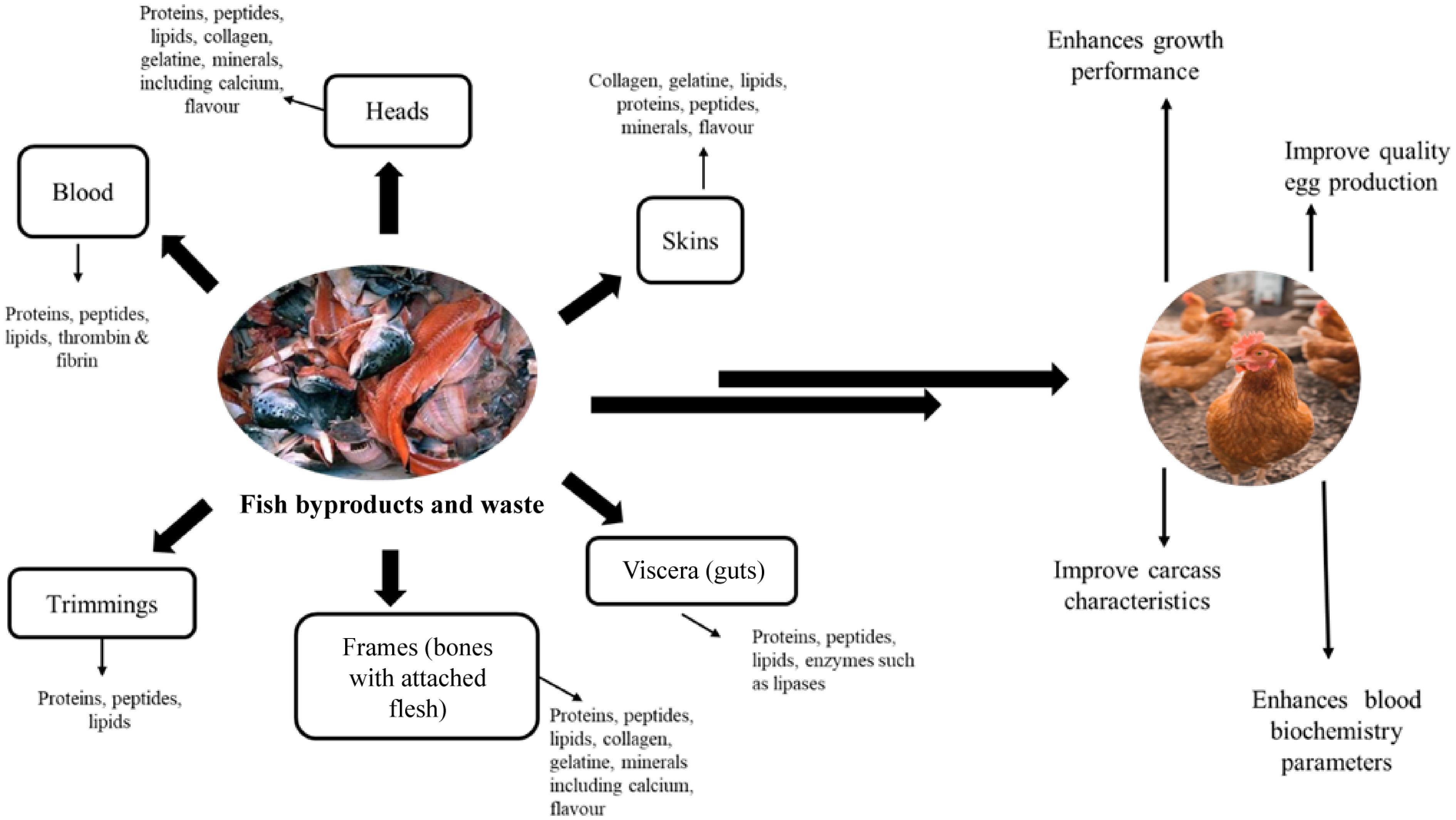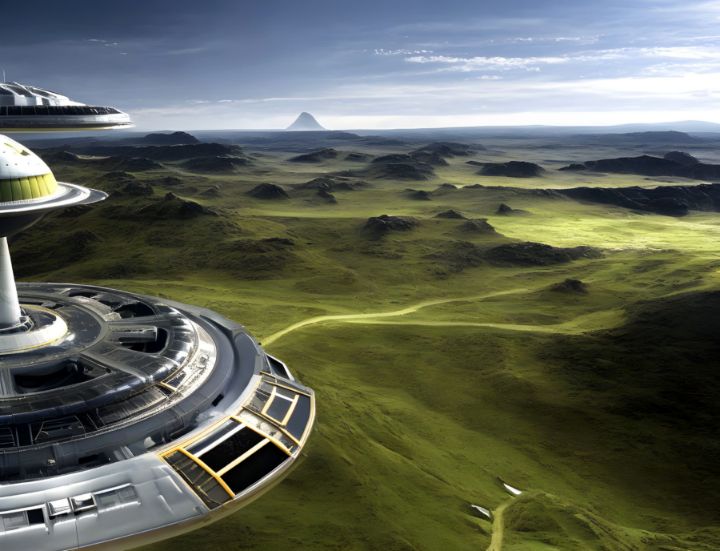Report on the Impact of Post-Capture Sampling Time on Fish Gut Microbiome Analysis
Aligning Fisheries Science with the Sustainable Development Goals
The health of marine ecosystems is a cornerstone of global sustainability, directly supporting the United Nations Sustainable Development Goals (SDGs), particularly SDG 14 (Life Below Water). The gut microbiome of fish has emerged as a powerful bio-indicator, reflecting not only the health of individual fish but also the condition of their environment, including water quality, pollution, and the impacts of climate change. Accurate assessment of this indicator is vital for the sustainable management of fisheries, which is crucial for SDG 2 (Zero Hunger) and SDG 12 (Responsible Consumption and Production).
However, the reliability of gut microbiome data is threatened by standard practices in commercial fisheries, where samples are often collected hours, days, or even weeks after the fish are caught. This delay can lead to post-mortem degradation of the microbial community, potentially skewing scientific results and undermining management decisions. This report details a study investigating the rate and nature of this degradation in wild-caught skipjack tuna (Katsuwonus pelamis) to establish scientifically robust sampling protocols that support global sustainability targets.
Methodology for Assessing Microbiome Degradation
To understand how post-mortem decomposition affects gut microbiome composition, two experiments were conducted on skipjack tuna, a commercially significant species whose sustainable management is critical for global food security (SDG 2).
Experimental Design
The study analyzed gut microbiome changes at five specific post-capture time points:
- Immediately (0 hours)
- 2 hours
- 24 hours
- 12 days (288 hours)
- 24 days (576 hours)
Two distinct experimental setups were used to ensure comprehensive results:
- Intra-individual Comparison: Gut samples from the same ten fish were analyzed at each time point to track degradation while controlling for individual variation.
- Inter-individual Comparison: Different sets of ten fish were sampled at each time point, simulating the common practice of sampling from a batch of fish upon landing in port.
For all samples, DNA was extracted from the gut lining, and the V3-V4 region of the 16S rRNA gene was amplified and sequenced using DNA metabarcoding to identify the microbial communities present. This rigorous approach provides the high-quality data needed to inform innovations in marine monitoring, contributing to SDG 9 (Industry, Innovation, and Infrastructure).
Key Findings: A Critical Window for Sample Preservation
The study revealed that significant and rapid changes occur in the fish gut microbiome post-mortem if samples are not preserved promptly. These findings have profound implications for the accuracy of ecological assessments and the management of marine resources.
Impact of Time on Microbiome Integrity
The analysis demonstrated a clear pattern of microbial community degradation over time. Key observations include:
- Significant Changes within 24 Hours: A critical threshold was identified at 24 hours post-capture. After this point, key metrics of microbial diversity, such as species richness (Chao1 index), changed significantly.
- Loss of Diversity: The overall diversity of the gut microbiome decreased over time, indicating that the original, complex microbial community was being replaced by a less diverse, decomposition-driven community.
- Early Onset of Degradation: Some metrics, including species evenness and sample heterogeneity, showed significant deviation from the baseline (0 hours) in as little as two hours, highlighting the extreme sensitivity of the microbiome to delays in preservation.
These results confirm that samples preserved after 24 hours are unlikely to represent the true microbiome of the living fish, potentially leading to flawed conclusions about fish health and ecosystem status.
Identifying Microbial Indicators of Degradation
The study successfully identified two bacterial families whose relative abundance changes predictably with decomposition, making them potential biomarkers for sample quality.
- Vibrionaceae: This family, common in the gut of healthy marine fish, showed a significant and consistent decrease in relative abundance over time. A high abundance of Vibrionaceae is indicative of a fresh, well-preserved sample.
- Bradyrhizobiaceae: This family, rarely found in fresh marine fish guts, significantly increased in relative abundance as time progressed. A high abundance of Bradyrhizobiaceae suggests that significant degradation has occurred.
These families can serve as a quality control check in future studies. By assessing their relative abundance, researchers can gauge the integrity of samples where the exact time of preservation is unknown, thereby strengthening the scientific foundation for achieving SDG 14.
Implications for Sustainable Fisheries and Marine Conservation
The findings of this report underscore the urgent need to revise sampling protocols for fisheries-dependent research to ensure data reliability and support the effective management of marine ecosystems.
The Critical Need for Timely Preservation
The research establishes that to obtain a representative snapshot of a fish’s gut microbiome, samples must be preserved as quickly as possible after capture. The 24-hour mark represents a point of no return, beyond which the data becomes unreliable for assessing the health of fish populations or their environment. Failure to adhere to this timeframe can introduce confounding variables that obscure true ecological signals, such as the impacts of climate events (e.g., ENSO) or pollution on marine life. This directly impacts our ability to monitor progress towards targets under SDG 14 (Life Below Water).
Enhancing Scientific Rigor for SDG Reporting
Achieving the SDGs requires robust, repeatable, and reliable scientific data. This study provides a clear pathway to improve the quality of microbiome data used in marine science. By adopting standardized, validated sampling protocols, the scientific community can:
- Increase the accuracy of ecosystem health assessments.
- Provide more reliable advice to fisheries managers, supporting SDG 12 (Responsible Consumption and Production).
- Strengthen the monitoring of biodiversity and the impacts of anthropogenic stressors, which is fundamental to conserving life below water (SDG 14).
- Ensure that management of vital food resources like tuna is based on sound science, contributing to global food security (SDG 2).
Conclusion and Recommendations
This study provides definitive evidence that the composition of the gut microbiome in wild-caught marine fish changes substantially after death, with significant degradation occurring within 24 hours. This knowledge gap has limited the development of robust sampling protocols, jeopardizing the reliability of studies essential for sustainable marine management.
To align scientific practice with the ambitious goals of the 2030 Agenda for Sustainable Development, particularly SDG 14, the following recommendations are proposed:
- Immediate Preservation is Ideal: To obtain the most representative microbiome data, gut samples should be preserved in a stabilizing agent like RNAlater as soon as possible after capture, ideally within two hours.
- Establish a 24-Hour Cut-Off: Samples preserved more than 24 hours after capture should be considered potentially compromised and their results interpreted with extreme caution, if not excluded from analyses aimed at assessing in-life conditions.
- Utilize Degradation Indicators: The relative abundance of Vibrionaceae (high in fresh samples) and Bradyrhizobiaceae (high in degraded samples) should be used as a quality control metric to assess the integrity of gut microbiome samples.
- Develop Species-Specific Protocols: Further research should validate preservation windows for other commercially and ecologically important fish species, as degradation rates may vary.
By implementing these evidence-based protocols, researchers, fisheries observers, and managers can ensure that scientific data accurately reflects the health of our oceans, providing a solid foundation for the sustainable use and conservation of marine resources for generations to come.
Analysis of Sustainable Development Goals in the Article
1. Which SDGs are addressed or connected to the issues highlighted in the article?
The article primarily addresses issues related to the conservation and sustainable use of marine resources, scientific research, and innovation. The following Sustainable Development Goals (SDGs) are connected to the topics discussed:
- SDG 14: Life Below Water – This is the most relevant SDG as the study focuses on a wild-caught marine fish (skipjack tuna), commercial fisheries, and the health of marine ecosystems. The research aims to improve the reliability of scientific data used for fisheries management and ecological assessments, which is central to conserving and sustainably using the oceans, seas, and marine resources.
- SDG 9: Industry, Innovation and Infrastructure – The article contributes to this goal by focusing on enhancing scientific research and upgrading technological capabilities. It develops and validates a scientific protocol for sample collection and analysis (DNA metabarcoding), which represents an innovation in research methodology for marine biology and fisheries science.
- SDG 12: Responsible Consumption and Production – This goal is connected through the theme of sustainable management of natural resources. The article’s findings are intended to improve the management of commercial fish stocks, which is a key component of ensuring sustainable production patterns in the fishing industry. Reliable data prevents “management missteps” and supports the efficient use of marine resources.
2. What specific targets under those SDGs can be identified based on the article’s content?
Based on the article’s focus, several specific targets under the identified SDGs are relevant:
-
Target 14.4: “By 2020, effectively regulate harvesting and end overfishing, illegal, unreported and unregulated fishing and destructive fishing practices and implement science-based management plans…”
- Explanation: The article directly supports this target by aiming to improve the scientific basis for fisheries management. It states that the “limited understanding of how sampling and preservation time affect gut microbiome composition [is] particularly concerning” and can lead to “ecological misunderstandings and management missteps.” By establishing reliable sampling protocols, the research provides a tool to generate accurate data for the “science-based management plans” needed to regulate harvesting effectively.
-
Target 14.a: “Increase scientific knowledge, develop research capacity and transfer marine technology… in order to improve ocean health and to enhance the contribution of marine biodiversity to the development of developing countries, in particular small island developing States…”
- Explanation: The study is a direct contribution to increasing scientific knowledge about marine fish health and microbiology. It explicitly mentions that the fish were caught in the “Solomon Islands Exclusive Economic Zone (EEZ),” which is a small island developing state. The development of “reliable sampling protocols” is a form of developing research capacity and transferring a methodology that can be used to improve ocean health monitoring.
-
Target 9.5: “Enhance scientific research, upgrade the technological capabilities of industrial sectors in all countries, in particular developing countries…”
- Explanation: The research is a clear example of enhancing scientific research. It uses advanced methods like “DNA metabarcoding,” “real-time qPCR,” and complex “bioinformatics analysis” to solve a practical problem in fisheries science. The conclusion, which recommends a specific preservation protocol, serves to “upgrade the technological capabilities” of researchers and institutions involved in marine ecosystem monitoring.
3. Are there any indicators mentioned or implied in the article that can be used to measure progress towards the identified targets?
The article mentions and implies several specific, measurable indicators that can be used to track progress towards the identified targets. These are not the official SDG indicators but are directly derivable from the research findings:
- Relative abundance of specific bacterial families: The study identifies the “decrease in relative abundance of Vibrionaceae and increase in Bradyrhizobiaceae” as “potential indicators for the gut microbiome decomposition.” This provides a quantifiable metric to assess the quality and degradation level of a given fish gut sample, which is crucial for ensuring the reliability of data used in science-based management (Target 14.4).
- Timeliness of sample preservation: The article establishes a critical time window for sample preservation. It recommends preserving samples “ideally within two hours, and no later than 24 h” after capture. The adherence to this timeframe (e.g., the percentage of samples in a research program preserved within 24 hours) can serve as a direct indicator of improved research capacity and protocol implementation (Target 14.a).
- Microbial diversity and richness indices: The study uses “Chao1 species richness” and “Simpsons species evenness” to demonstrate that “significant changes in the gut microbiome… [occur] as early as 24 h after death.” These indices can be used as indicators to monitor the integrity of samples and the effectiveness of preservation methods in scientific studies (Target 9.5).
- Development and adoption of validated sampling protocols: The primary outcome of the research is the proposal of a “reliable sampling protocol.” The existence and adoption of such standardized protocols by fisheries management bodies and research institutions is an indicator of increased scientific capacity and the transfer of marine technology (Target 14.a).
4. Table of SDGs, Targets, and Indicators
| SDGs | Targets | Indicators Identified in the Article |
|---|---|---|
| SDG 14: Life Below Water |
14.4: Effectively regulate harvesting and implement science-based management plans.
14.a: Increase scientific knowledge and develop research capacity, especially in developing states. |
|
| SDG 9: Industry, Innovation and Infrastructure | 9.5: Enhance scientific research and upgrade technological capabilities. |
|
| SDG 12: Responsible Consumption and Production | 12.2: Achieve the sustainable management and efficient use of natural resources. |
|
Source: nature.com







